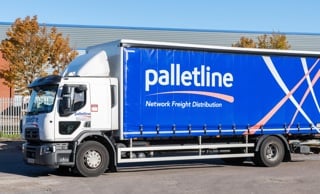Fleet procurement in the ‘new normal’ business world will become more complex as the Coronavirus lockdown restrictions are lifted and the Government attempts to kick-start the economy.
Businesses face a number of questions and challenges over the future composition of their fleets to make sure they are running at optimum efficiency.
Fleet Logistics believes the changes will provide businesses with the opportunity to future-proof their fleets, rethink their supply strategies and increase flexibility and resilience in their supply chains.
Sue Branston, country head of Fleet Logistics UK and Ireland, said: “The complexity of operating a fleet is increasing all the time, especially in these dynamic times as we look at coming out of lockdown, and businesses need to consider whether they feel confident in tackling these challenges themselves.
“Or do they feel that it makes sense to consider the advantages of getting advice from an independent fleet management partner, with the knowledge and experience to help guide them through these unprecedented and challenging times.
“We are focused on using our knowledge and experience to support our clients strategically during the current uncertainty and the benefits are realised in the bottom line by their business.”
Many organisations expect more of their employees to work from home more regularly having experienced home working on a larger scale during lockdown. However, as a result, companies will need to carefully consider the types of vehicles they need to run in the future, and whether they could look at operating smaller models or greener alternatives such as electric vehicles and hybrids.
Greater homeworking inevitably means fewer business miles being driven. If an employee with a 50-mile commute works from home for two days a week, that equates to a saving of 5,000 miles a year, or 15,000 miles over a three-year contract. Businesses need to look at the number of employees who may be working this way in the future and renegotiate their mileage benchmarks with their leasing supplier to take into account the new way of working, which will also reduce their lease costs as a result.
Having more than one leasing provider enables businesses to spread risk and also increases the number of credit lines available. In a business world, where securing credit may become more of a challenge - due to increased economic and financial pressure – Fleet Logistics says it could provide real benefit, especially for business sectors where a credit squeeze could become a major issue.
Having multiple leasing suppliers also allows the introduction of the concept of multi-bidding, with competitive quotes from at least two suppliers for the same vehicle helping to drive down leasing costs for each new vehicle ordered.
The current CO2 limit for offsetting all leasing rental costs against Corporation Tax is 110g/km. Above 110g/km, the rate falls from 100% to 85%. However, from next April, the lease rental restriction limit falls to just 50g/km. Businesses need to take this into account when looking at their vehicle fleet policy going forward and consider how practicable it would be to have all, or a mix, of low emitting vehicles on the fleet. Staying with the current vehicle mix will inevitably have an inflationary impact on whole life costs under the new rules.
With 0% Benefit-in-Kind tax rates this year, rising to 1% next year and 2% the following year, electric vehicles can provide their drivers with attractively low tax bills. And for businesses, fuel costs and Class 1A National Insurance Contributions are reduced as a consequence, as well as CO2 and NOx emissions.
The challenge for businesses, however, is to evaluate whether, and how many, EVs might be practical for the fleet based on driver profiles, mileages covered, journey type, driving conditions, charging infrastructure and the number of drivers involved.





















Login to comment
Comments
No comments have been made yet.